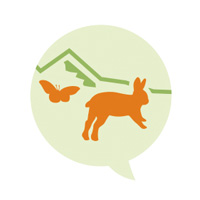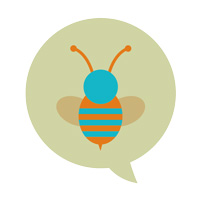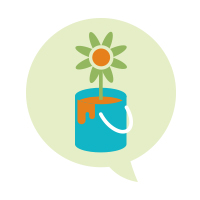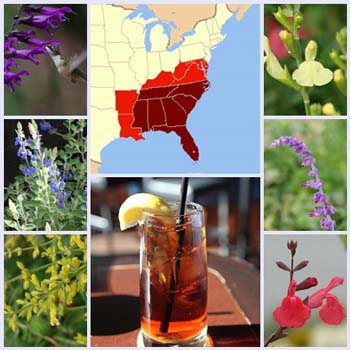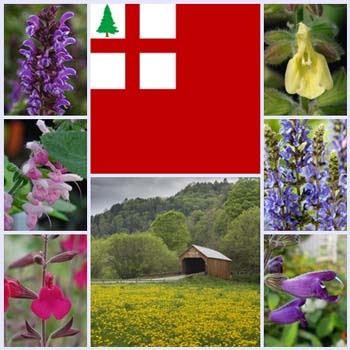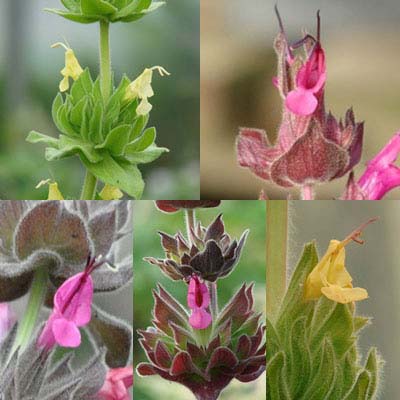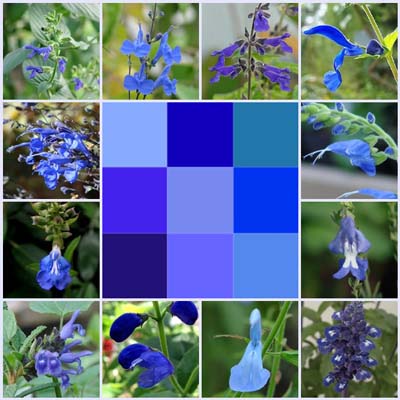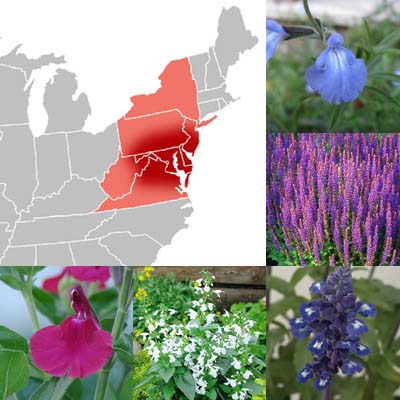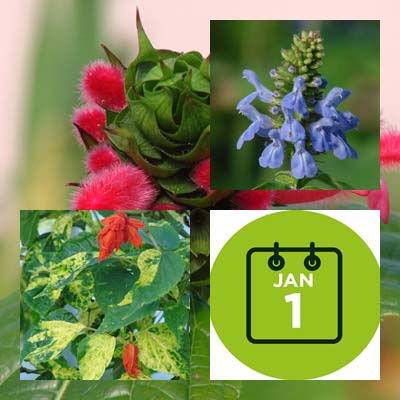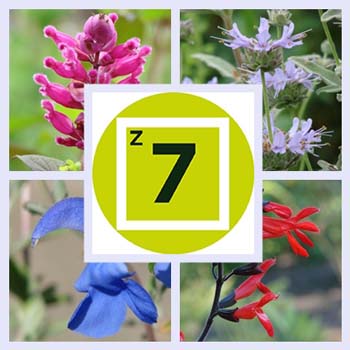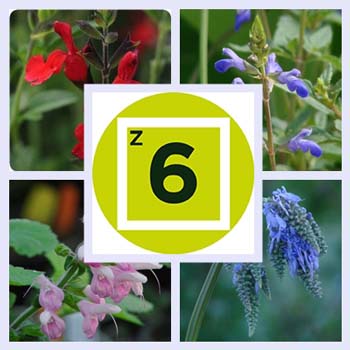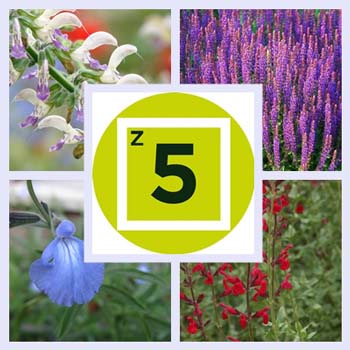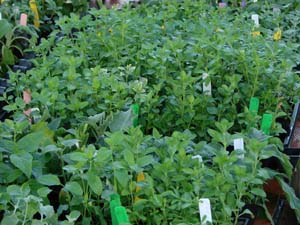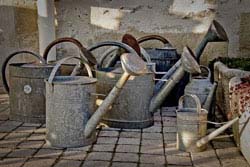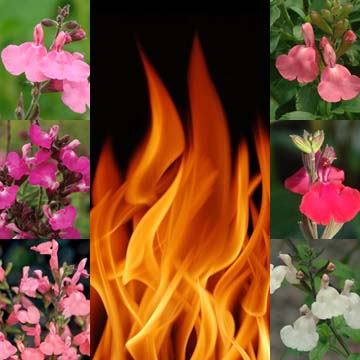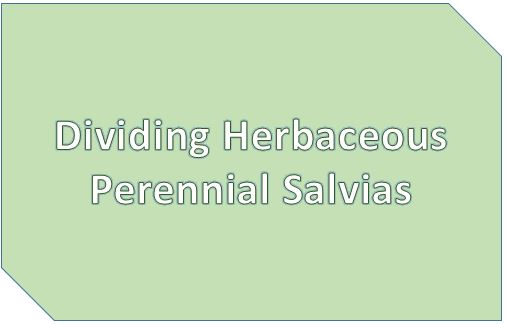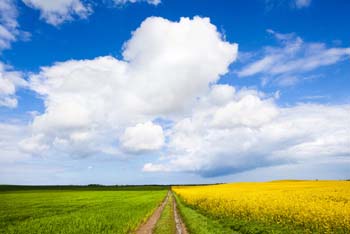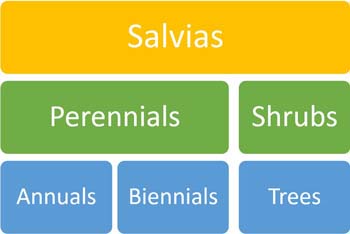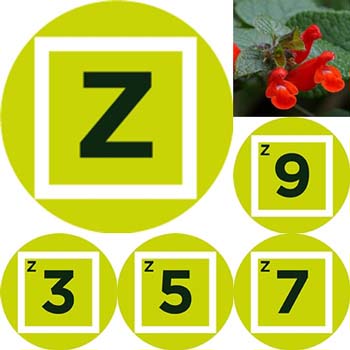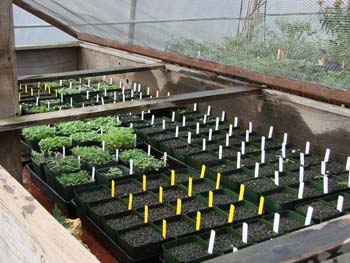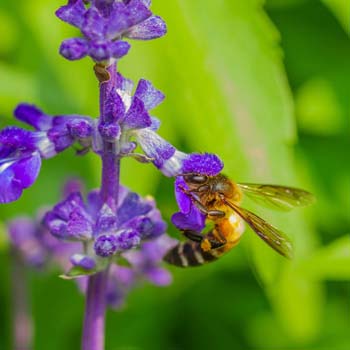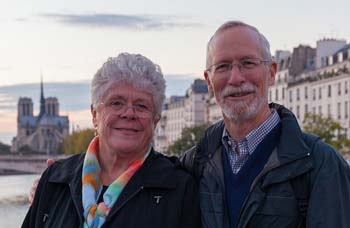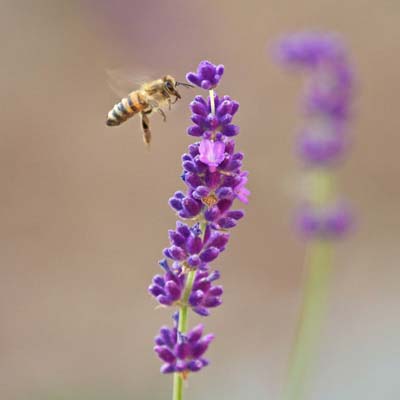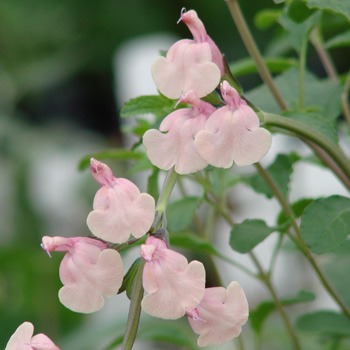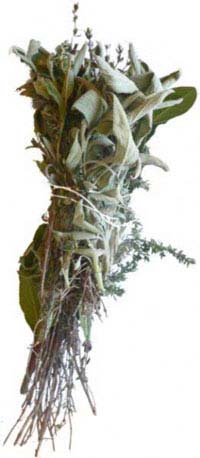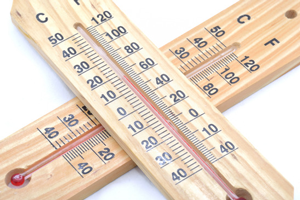
We began publishing our Everything Salvias blog in 2010 for your enjoyment and to help you "get it right" when growing sages that are often unavailable at local garden centers.
It seems like there is an endless bounty of stories to be told. But that's to be expected when covering a genus containing an estimated 900 species -- the largest group within the mint family (Lamiaceae). In addition to Salvias, we write about other species that are either mint family members or low-water companions for our many drought-tolerant Salvias. We welcome comments as well as suggestions for future blog posts.
To access articles rapidly based on your interests, please click on the categories below, which include do-it-yourself videos (Views from the Garden). But please note: This is a dangerous place for a sage lover.
| Explore the Categories: | ||||
| | | | | |
| | | | | |
| | | | | |
| | | | | |
| | | |||
Posted: Saturday, May 2, 2015
Synopsis:
True sages are members of the Salvia genus and number in the hundreds. They are native to a wide variety of environments worldwide, which is why some are ideal for the dry gardens of California and others can handle the abundant moisture of the American Southeast. Flowers by the Sea raises many sages that grow well in the Southeast, including some that are either native to the region or have jumped fences from gardens into the wild.
Read the Article
Posted: Thursday, April 30, 2015
Synopsis:
Some people think you only find sage and coyotes out West. But Canis latrans, the Eastern Coyote, slipped into New England in the 1930s, and who knows when all the sages arrived? The New England Wild Flower Society notes that Lyreleaf Sage (Salvia lyrata) is the region's only native sage. It's one among many Salvia species grown in the Botanic Garden of Smith College in Massachusetts, which has one of the largest collections of sage in the region. Flowers by the Sea Online Plant Nursery raises hundreds of sages, including many northeastern favorites.
Read the Article
Posted: Saturday, April 25, 2015
Synopsis:
Have we got tools for you! No, we aren't selling Ginzu clippers, rust-free shovels, a miraculous compost-in-minutes machine or anything requiring payments. We're talking about a set of color tools for accurately visualizing and comparing the floral and foliage colors of Salvias. As you wander through the riot of hues in our online catalog at Flowers by the Sea, these tools aid plant selection and landscape planning. Beginning in fall 2014, we began identifying the colors of all FBTS plants based on the internationally standardized color system published by the U.K.'s Royal Horticultural Society. This improves descriptions of plant colors and makes color comparisons of plants easier for garden design.
Read the Article
Posted: Saturday, April 11, 2015
Synopsis:
Among the hummers' favorites: Salvia spathacea, commonly known as Hummingbird Sage. As it name suggests, this California native produces the hummingbirds' flower of choice, blooming from late winter through summer -- and sometimes again in Fall -- with rose-pink to magenta blossoms. Available in six varieties, this robust perennial not only attracts hummers with its abundant nectar, it's easy to grow and enhances any landscape with its aromatic blooms and fragrant evergreen foliage.
Read the Article
Posted: Friday, April 10, 2015
Synopsis:
Flowers by the Sea Online Salvia Nursery has fallen hard for the delicate look but rugged constitution of wildflower sages from Valencia on Spain's Mediterranean coast, especially Strong Spanish Sage (Salvia valentina). S. valentina has upright form and looks elegant dressed up in tall spikes of deep lavender, double-lipped flowers from spring into summer. It's a meadow sage with fuzzy bracts and stems that mature from green to rich Pantone Marsala.
Read the Article
Posted: Thursday, March 26, 2015
Synopsis:
Forget all the mournful music telling you that blue is the color of sadness. In a Salvia garden filled with hot colors, true blue is a peacemaker -- a reliable harmonizer that commands peace in the garden. This article talks a tiny bit about football, Madonna and the chemistry of true blue flowers. Then it offers a lot of true blue sages for gardens coast to coast from our Flowers by the Sea Online Nursery catalog.
Read the Article
Posted: Friday, March 20, 2015
Synopsis:
Outside of its cities, the Mid-Atlantic can be described as an overwhelmingly green place. If you love the Mid-Atlantic, you revel in its verdant landscape. However, if you aren't reveling in the predictable planting choices you see in neighbor's yards, it may be time to expand your horizons by exploring the Salvia genus. Flowers by the Sea discusses the boundaries, USDA Plant Hardiness Zones and Salvia choices for the region.
Read the Article
Posted: Sunday, March 15, 2015
Synopsis:
If a hummingbird could talk, he or she would tell you it's hard work packing for a long journey. Consuming mightily from dawn to dusk, day after day, hummingbirds double their weight before migration. They can't afford to run out of fuel before their next meal. To help hummingbirds, particularly on their northward journey, home gardeners can celebrate the arrival of spring by planting gardens filled with early blooming Salvias and companion plants that are excellent annuals in areas where winters are too chilly for survival as perennials.
Read the Article
Posted: Friday, March 6, 2015
Synopsis:
Winter temperatures can seem moderate, then dip to freezing in USDA Hardiness Zone 7, which covers a broad range of locations from Washington State to Washington, D.C. To succeed, Salvia perennials and shrubs need to tolerate temperature shifts and local growing conditions. Learn more at Flowers by the Sea, an online, mail-order Salvia nursery.
Read the Article
Posted: Wednesday, March 4, 2015
Synopsis:
To bloom yearly, Salvia perennials and shrubs in USDA Hardiness Zone 6 need to tolerate chilly winters with average low temperatures of -10 degrees F. The success of Zone 6 sages also depends on local growing conditions. Learn more at Flowers by the Sea, an online, mail-order Salvia nursery.
Read the Article
Posted: Saturday, February 28, 2015
Synopsis:
To bloom yearly, Salvia perennials and shrubs in USDA Hardiness Zone 5 need to tolerate deep freeze winters with average low temperatures of -20 degrees F. The success of Zone 5 sages also depends on local growing conditions. Learn more at Flowers by the Sea, an online, mail-order Salvia nursery.
Read the Article
Posted: Tuesday, February 24, 2015
Synopsis:
Growing Salvias from plant cuttings is simple with a bit of expert advice from Flowers by the Sea horticulturist Kermit Carter. Although many Salvias are woody, the tips of their stems are soft and green. They're called softwood tips. In this video, Carter talks about how to select the best cuttings for propagation. He shows how long plant cuttings need to be and explains plant nodes -- the points from which roots grow. Sometimes the leaves of a cutting require more moisture than a stem can absorb. Carter trims portions of leaves to reduce wilt and improve rooting. Demonstrating a standard FBTS procedure, he accelerates rooting by dipping the stems of cuttings in powdered rooting hormone and inserting them in tiny foam blocks for easy growth. Carter also suggests heating mats to encourage growth. He shows what the foliage and root balls will look like a few weeks later when ready for transplanting.
Salvia Softwood Tip Cuttings is part of the Views from the Garden video series published in the FBTS Everything Salvias blog. Flowers by the Sea is a farm and online, mail order nursery specializing in Salvias.
Read the Article
Posted: Friday, February 20, 2015
Synopsis:
Salvias may need little or lots of water depending on species and local growing conditions. Many are drought resistant, getting by on less than an inch a week. Learn about the many kinds of Salvias, also called sages, at Flowers by the Sea. We're an online, mail-order nursery specializing in sages.
Read the Article
Posted: Friday, February 13, 2015
Synopsis:
Waterwise landscapes don't have to be cactus gardens if you grow leafy, colorful drought-resistant Salvias, such as Australian Heatwave™ Mountain Sages, which are crosses of Salvia microphylla and S. greggii. Hybridizers Howard Bentley and Steve Eggleton of Plant Growers Australia used these tough American and Mexican native plants to create their series. One goal was to aid water conservation during their nation's hot, dry summers.
Read the Article
Posted: Wednesday, February 11, 2015
Synopsis:
Overgrown herbaceous perennial Salvias need to be divided into multiple smaller plantings. In this video, Flowers by the Sea horticulturist and co-owner Kermit Carter demonstrates how to split perennials, which are plants that die to ground in cold weather but return annually. Many perennial Salvias with basal, rosette foliage have roots that spread to form clumps of multiple plants. Carter says that breaking a clump into smaller pieces is similar to working a jigsaw puzzle; find the clump's crowns and you find the division points. Carter demonstrates how to complete the task quickly using simple tools, such as your fingers and a serrated bread knife. He removes dead foliage and spent soil to ready the plants for replanting in quality potting mix. Then he explains how to encourage root growth by placing the pots in partial sun so soil doesn't get too dry.
Dividing Herbaceous Perennial Salvias is part of the Views from the Garden video series published in the FBTS Everything Salvias blog. Flowers by the Sea is a farm and online, mail order nursery specializing in Salvias.
Read the Article
Posted: Tuesday, February 10, 2015
Synopsis:
Answering the question of how much sunlight Salvias need is dependent on the lands and conditions in which they originated. Also called true sages, Salvias may range from full sun to full shade species. But many prefer a combination of sun and shade. Flowers by the Sea is an online, mail-order nursery where you can buy hundreds of different sages.
Read the Article
Posted: Thursday, February 5, 2015
Synopsis:
For beautiful floral display and refreshing greenery, every yard needs a combination of annual bedding plants, perennials and shrubs. Salvias provide a feast of landscaping possibilities. Flowers by the Sea explains all the different types of Salvias, including subshrubs, biennials and tree-like Salvias
Read the Article
Posted: Monday, February 2, 2015
Synopsis:
USDA Plant Hardiness Zones aid in selecting Salvia perennials and shrubs that save gardeners money by re-emerging each spring to bloom again. Flowers by the Sea, an online, mail-order nursery specializing in Salvias can help you select the best ones for your USDA zone.
Read the Article
Posted: Friday, January 30, 2015
Synopsis:
In this video, Flowers by the Sea horticulturist and co-owner Kermit Carter explains a simple method for starting Salvias from seed. First, he mixes a pinch each of two powdered inoculants into enough potting soil for a plant. Carter explains that the inoculants combat bacterial diseases, strengthen roots and aid transfer of nutrients from the potting soil, which is a soilless mix containing peat, perlite and biofungicides. He places the soil in a short, 3 1/2-inch container and tamps it down gently so the pot is about half full. Next, he adds an inch of lava gravel mixed with perlite to improve drainage so seedlings won't rot. The final steps include scattering seeds on the lava mix, then applying an ultra-thin layer of horticultural grit, such as crushed granite, on top before watering. The grit keeps the seeds in place but allows sunlight to penetrate for germination.
FBTS Growing Salvia from Seed is part of the Views from the Garden video series published in the Everything Salvias blog of Flowers by the Sea, a horticultural farm and an online, mail order plant nursery.
Read the Article
Posted: Thursday, January 29, 2015
Synopsis:
America buzzes with bee diversity, including 4,000 native species and many types of nonnative honeybees. Flowers by the Sea details the variety and value of our imperiled bees. This is the second article in a two-part series focused on identifying and understanding bees, becoming aware of threats to their survival and noting ways gardeners can protect these tiny wildlife. It includes tips on how to avoid bee stings.
Read the Article
Posted: Thursday, January 22, 2015
Synopsis:
Love of gardening is partly about love of nurturance. Some gardeners nurture far more than their home landscapes; that's the case with Silicon Valley retirees Richard and Bracey Tiede. Through avid volunteerism in organizations such as the Master Gardeners of Santa Clara County, Western Horticultural Society and Pacific Horticulture Society, they are helping to popularize drought-tolerant Salvias and shape sustainable gardening practices in the West -- a part of the country constantly facing drought.
Read the Article
Posted: Thursday, January 15, 2015
Synopsis:
It's no secret that Honeybees are American immigrants. Yet along with native bees, they descended from meat-eating wasps. All bees make food and flowers possible through pollination. This is the first article in a four-part Bees in the Garden series in the Everything Salvias blog of Flowers by the Sea. The series focuses on identifying and understanding bees, becoming aware of threats to their survival and noting ways gardeners can protect these tiny wildlife.
Read the Article
Posted: Saturday, January 3, 2015
Synopsis:
Whether planned or accidental, hybrids happen. This is especially true among the closely related Southwestern and Mexican species of Autumn Sage (Salvia greggii) and Mountain Sage (S. microphylla). They are native to different areas of the Southwest and Mexico, but cross freely when they meet. This story is the first installment in a two-part series initiating our Cultivating Color series. It involves the late Dr. Richard F. Dufresne, a Salvia specialist who helped us track the history of warm-colored S. x jamensis hybrids.
Read the Article
Posted: Thursday, December 25, 2014
Synopsis: Nothing says holidays like the fragrance of sage coming from the kitchen. It has even inspired writers, such as newspaper columnist and mystery novelist Denise Hamilton. Sage is the stuff of musky perfumes, fragrant Christmas candles and great homecooked meals cooking in the kitchen. It wraps us in the warmth as well as the chill of the season.
Read the Article
Posted: Friday, November 28, 2014
Synopsis:
Even in a small yard, you can have more than one climate. These variations are called microclimates. This article talks about how airflow may create microclimates in the yard, such as chilly areas near fences. It suggests ways to troubleshoot these problem areas and to make the best planting choices for them. Ask Mr. Sage answers questions based on calls and emails that Flowers by the Sea receives from customers.
Read the Article






